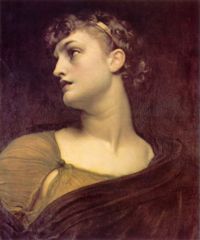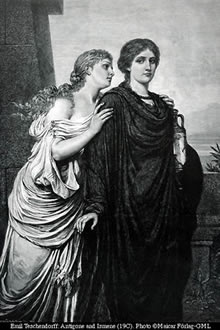
Journal Topics
Paper Topics

Assignment 1: Read the PROLOGUE (189-194) , PARADOS (194-195), SCENE I (196-203) and ODE I (203-204) =15 pages
The prologue is the exposition of the play and provides information that is necessary for the reader to follow the plot as it unfolds.
Scene 1: Creon raises issues about the nature of authority and leadership. What do you think of him? Try to make some connections with what you have learned about Greek society and government.
Scene II: Antigone and Creon confront each other. Sophocles loved to set two strong characters in confrontation with one another. Each of these characters is sure that he/she is right and the other is wrong. What is the argument of each?
Assignment 3: Read SCENE III (216-224), ODE III (224), SCENE IV (225-228), and ODE IV (228-230) = 14 pages
Scene III: Creon’s son Haimon, formerly pledged to marry Antigone, confronts his father. What is so compelling about Haimon’s argument? Look for foreshadowing of tragedy in this scene.
Scene IV: depicts Antigone’s final interaction with the Chorus and confrontation with Creon. Ode IV describes other famous Greek women who have suffered. It provides the audience with a larger context for Antigone, joining her to these famous persons.
Assignment 4: Read SCENE V (230-236), PAEN (236-238), and EXODUS (238-245) = 14 pages
Scene V: Teiresias (the blind seer) and Creon, another pair of strong characters, confront each other. Sophocles employs dramatic irony in the final scene because although Teiresias is blind, he is able to see what others cannot.
The Paean is a hymn to the god Dionysus.
The Exodos is the tragic denouement. Note that the messenger tells the awful details of the conclusion; the audience does not see them.